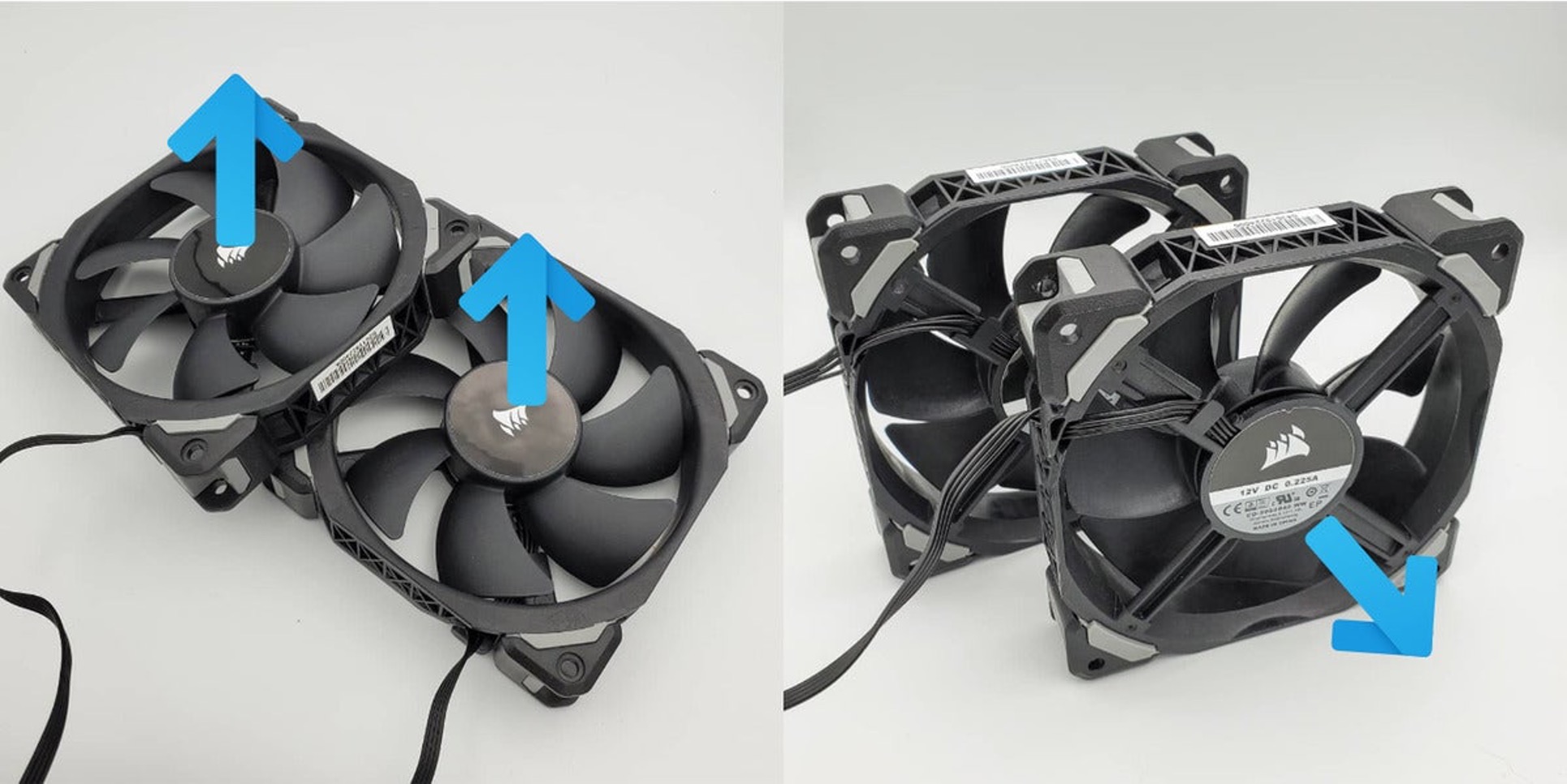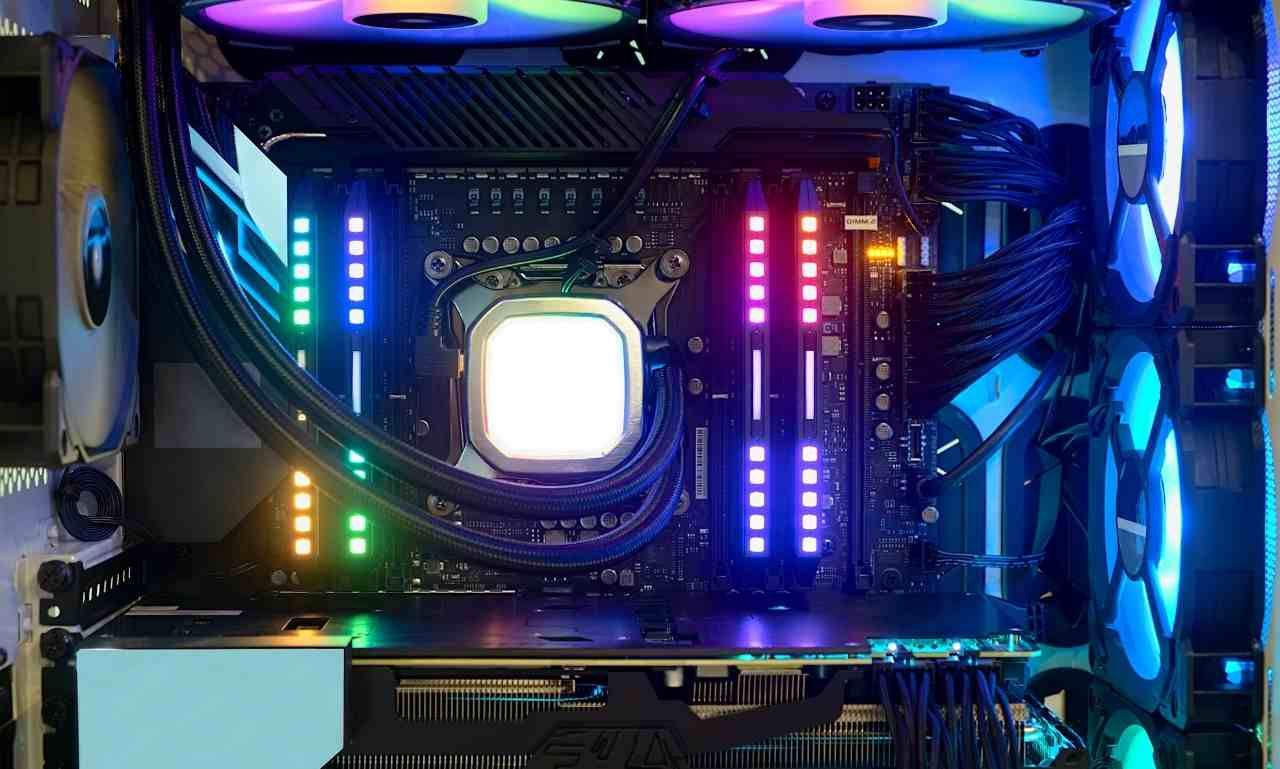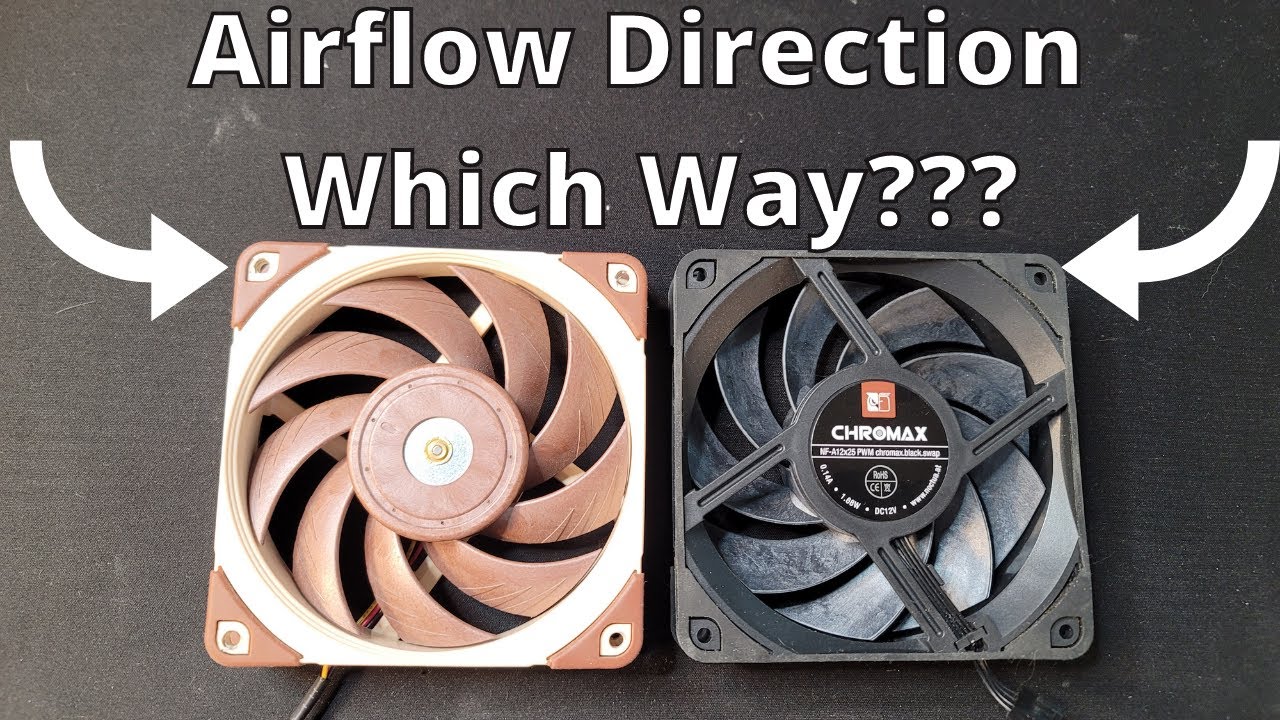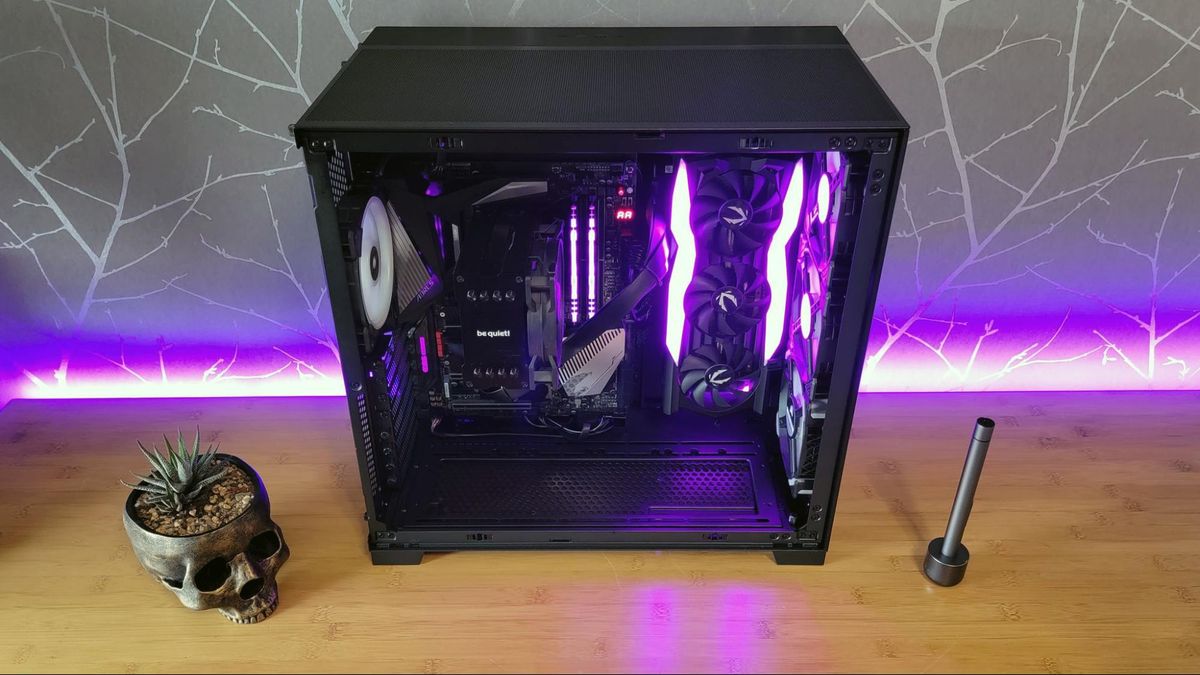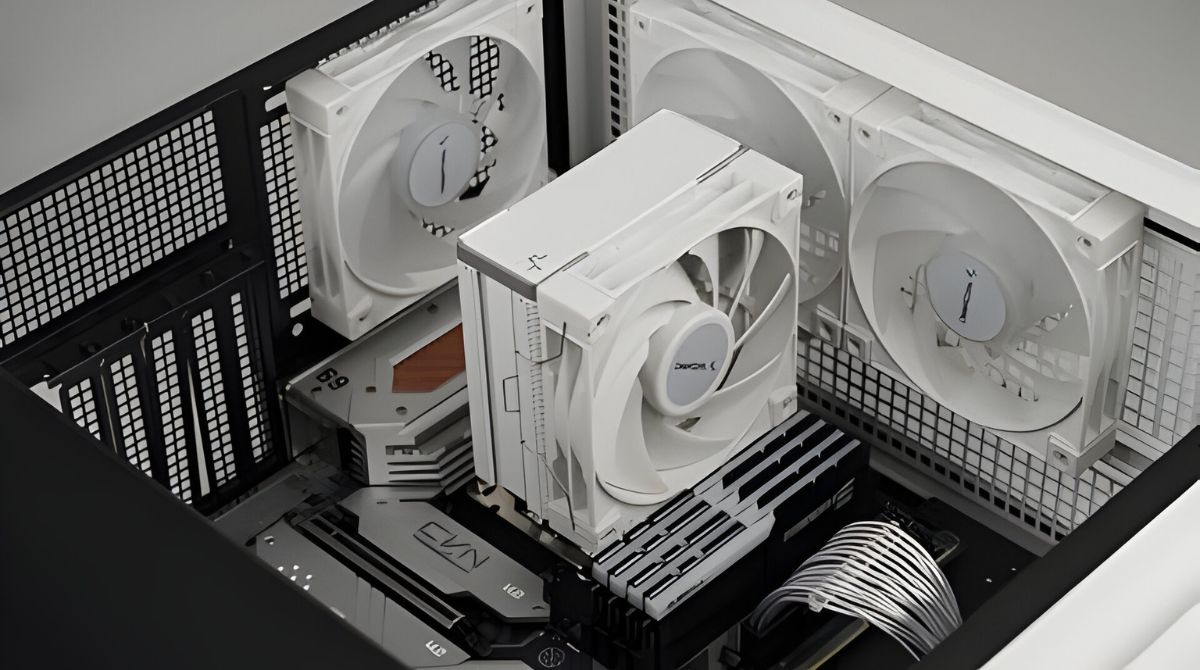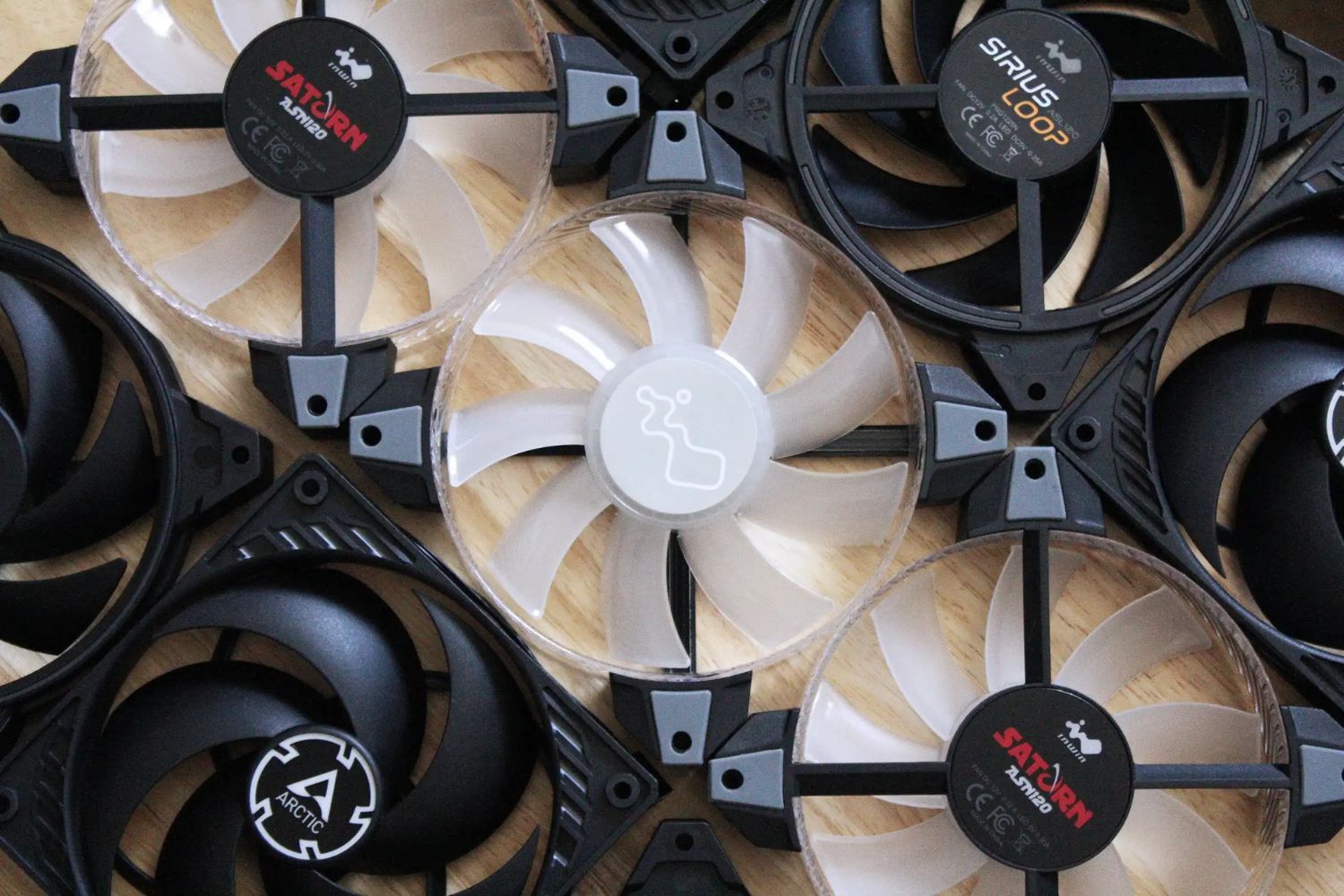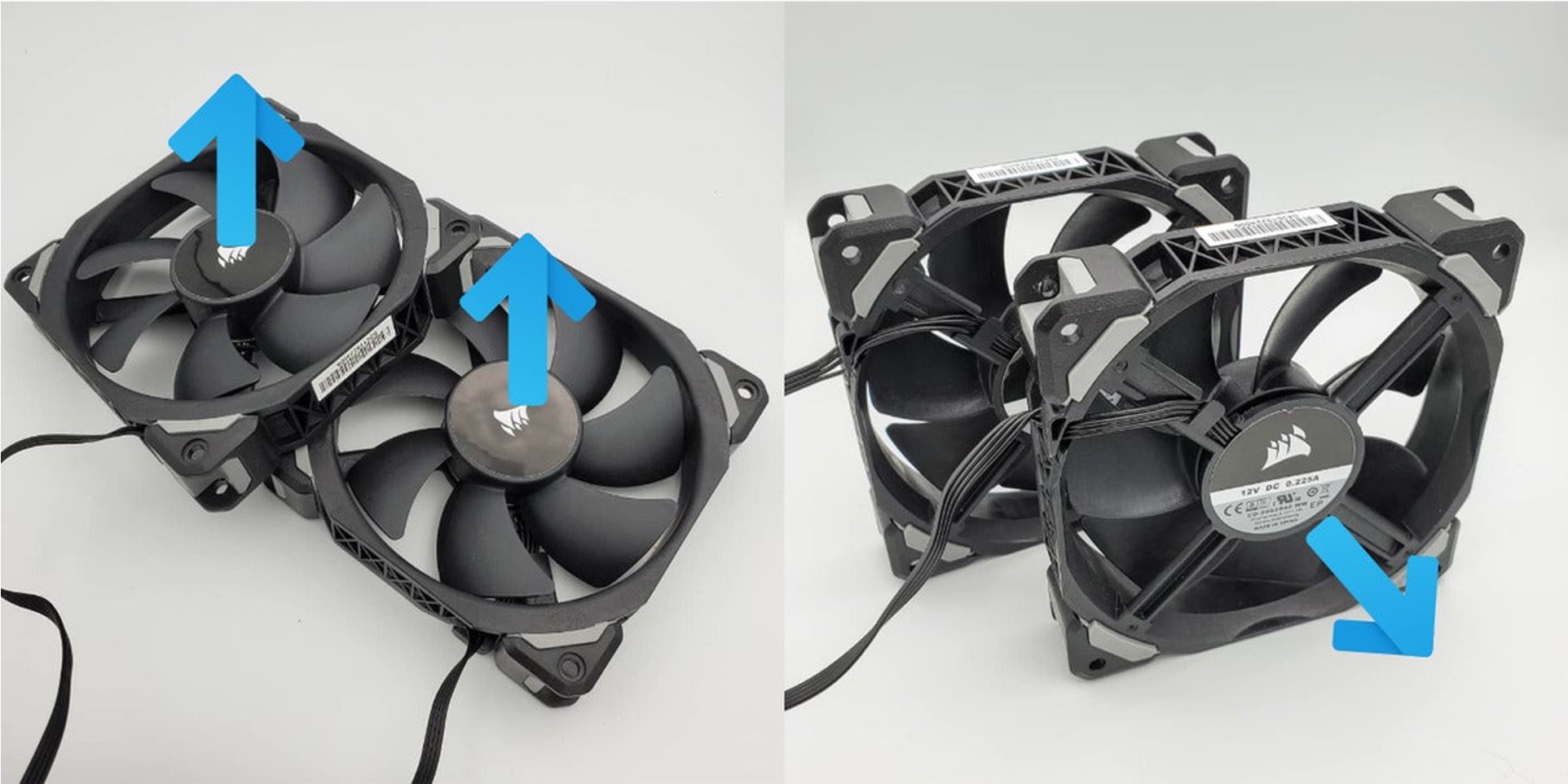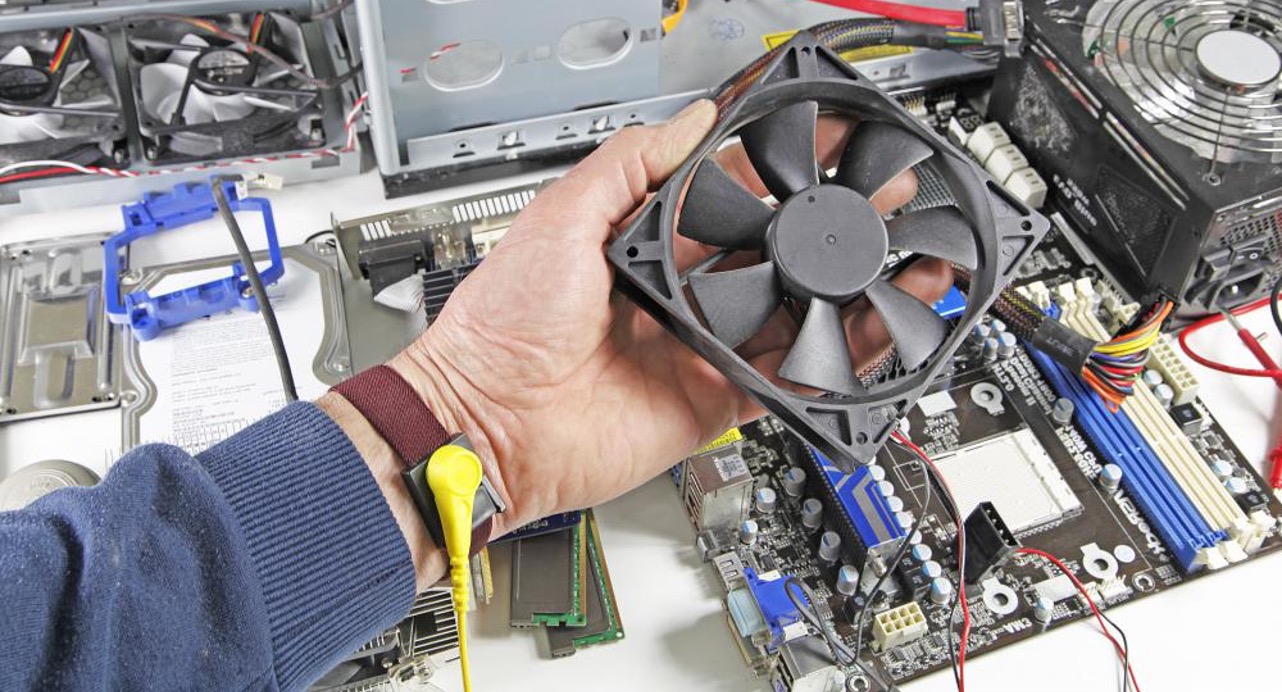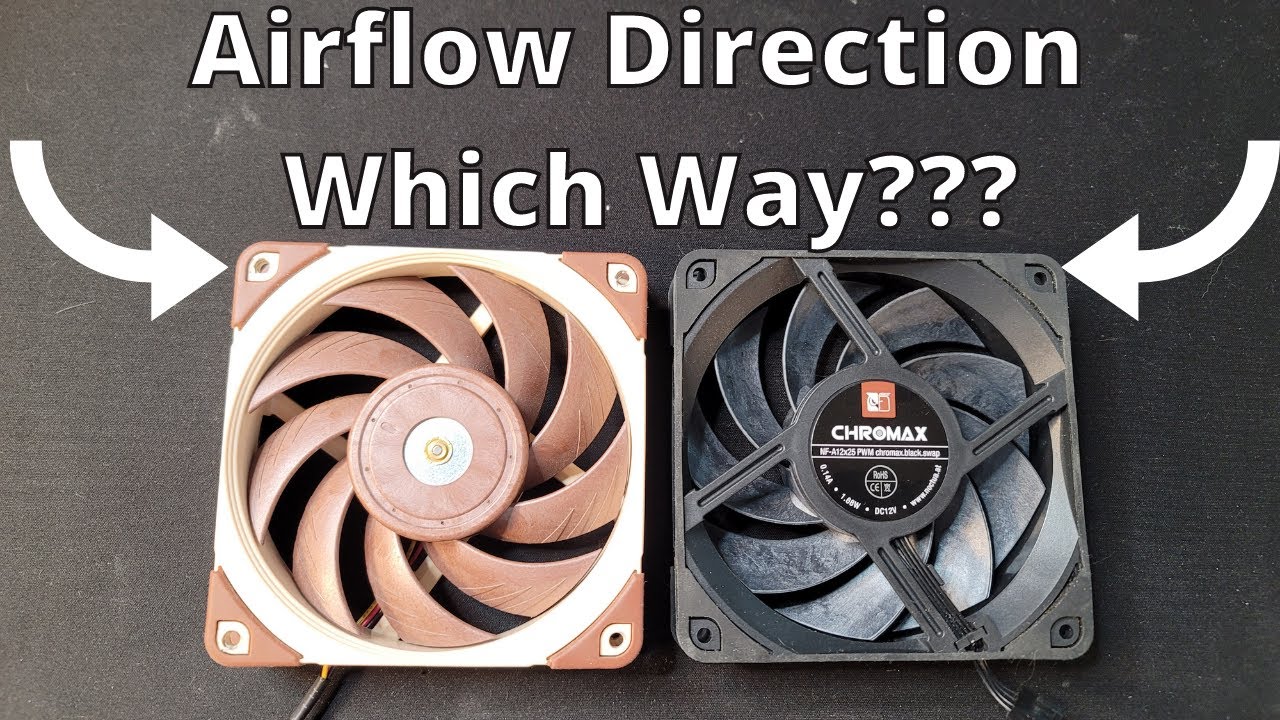Introduction
A case fan is an essential component in a computer system that helps to keep the internal components cool and maintain optimal performance. It plays a crucial role in dissipating heat generated by the central processing unit (CPU), graphics processing unit (GPU), and other components. Without proper cooling, these components can overheat, leading to reduced performance and potential damage.
Understanding how case fans work and the direction in which they blow is important for every PC builder or enthusiast. This knowledge is key to achieving efficient airflow management and maintaining a well-ventilated computer case.
In this article, we will explore the different types of case fans, discuss the importance of proper airflow, and answer the common question, “Which direction do case fans blow?” Additionally, we will delve into the reasons why the direction of the case fan matters, the pros and cons of fan orientations (intake vs. exhaust), and the factors to consider when deciding on fan placement.
Whether you are a seasoned PC builder or new to the world of computer hardware, this guide will provide you with valuable insights into optimizing your case fan setup for superior cooling performance.
What Is a Case Fan and What Does It Do?
A case fan is a device designed to circulate air within a computer case, also known as a chassis. It consists of a motor, fan blades, and a frame that attaches to the case. The main purpose of a case fan is to dissipate heat generated by internal components, such as the CPU, GPU, and power supply, by drawing cool air into the case and expelling hot air out.
Heat is a natural byproduct of the electronic components’ operation, and if not properly managed, it can lead to overheating, reduced performance, and even component failure. Case fans help prevent these issues by providing adequate airflow, allowing the components to operate at optimal temperatures.
By increasing air circulation inside the case, case fans effectively dissipate heat and maintain a cooler environment. This is particularly important during demanding tasks, such as gaming or running resource-intensive applications, when the components tend to generate more heat.
Additionally, case fans can also contribute to reducing noise levels. By promoting efficient airflow and preventing the buildup of hot air, the components are less likely to reach critical temperatures, potentially reducing the need for fans to ramp up their speeds and produce excessive noise to cool down the system.
It is important to note that case fans are not the only components responsible for cooling a computer. CPU coolers, GPU coolers, and power supply fans also play a role in heat dissipation. However, case fans work in conjunction with these components to improve overall airflow and maintain an optimal temperature within the system.
In the next sections, we will explore the significance of maintaining proper airflow in a computer case and discuss the various types of case fans available in the market.
Importance of Proper Airflow in a PC Case
Proper airflow is crucial for maintaining the overall health and performance of a computer system. It plays a vital role in preventing overheating, improving component longevity, and ensuring stable operation. Let’s explore why proper airflow is essential in a PC case.
1. Heat Dissipation: The primary purpose of airflow in a PC case is to dissipate the heat generated by the internal components. Heat is a natural byproduct of the components’ operation, and if not effectively dissipated, it can lead to performance issues and potential damage. Insufficient airflow can cause hotspots, where certain areas of the case become significantly hotter than others, increasing the risk of component failure.
2. Component Longevity: Overheating can significantly reduce the lifespan of computer components. Excessive heat can lead to thermal throttling, where the components reduce their performance to prevent damage. Prolonged exposure to high temperatures can also cause thermal stress and thermal fatigue, reducing the overall lifespan of the components. Proper airflow helps to maintain lower temperatures and extend the longevity of the computer system.
3. Avoiding Dust Build-Up: Dust accumulation is a common problem in computer cases, especially in environments with poor airflow. Dust can clog up the cooling fins, obstruct fans, and cause a further increase in temperature. Proper airflow helps to reduce dust build-up by keeping the air circulating and preventing it from settling on the components. This, in turn, reduces the need for frequent cleaning and maintenance.
4. Noise Reduction: Inadequate airflow can lead to fans spinning at higher speeds, resulting in increased noise levels. When components reach higher temperatures, fans are forced to work harder to cool them down, generating more noise in the process. Proper airflow helps to maintain lower temperatures and keeps fan speeds in check, resulting in quieter operation.
5. Overall System Performance: When a computer system is operating at optimal temperatures, it can deliver better performance and stability. Overheating can cause components to throttle their performance, resulting in reduced overall system performance. By ensuring proper airflow, the components can operate at their maximum potential, leading to a smoother and more efficient computing experience.
By understanding the importance of proper airflow in a PC case, you can take the necessary steps to optimize the cooling system, such as selecting appropriate case fans and positioning them effectively.
Different Types of Case Fans
Case fans come in various sizes, designs, and configurations to suit different needs and preferences. Understanding the different types of case fans available can help you make an informed decision when selecting the right fan for your PC case. Here, we’ll explore some of the most common types:
1. 120mm and 140mm Fans: These are the most common sizes of case fans. They offer a good balance between airflow and noise levels, making them suitable for most PC cases. The 120mm fans are more prevalent, while 140mm fans provide greater airflow with lower noise levels due to their larger size.
2. RGB Fans: RGB (Red, Green, Blue) fans are gaining popularity among PC enthusiasts for their ability to add vibrant lighting effects to the system. These fans feature customizable lighting options, allowing you to create stunning visual displays and synchronize them with other RGB components.
3. High-Performance Fans: High-performance fans are designed to provide maximum airflow at the expense of noise levels. These fans are ideal for enthusiasts and overclockers who prioritize cooling performance and are willing to tolerate a higher noise output.
4. Slim Fans: Slim fans are designed for low-profile cases or situations where space is limited. These fans are thinner compared to standard fans, allowing them to fit into tight areas without compromising airflow. However, slim fans may offer slightly lower cooling efficiency compared to their standard-sized counterparts.
5. Static Pressure Fans: Static pressure fans are designed to move air through restricted or obstructed spaces. They are commonly used for cooling radiators or heatsinks, where the air needs to be pushed through the narrow fins. Static pressure fans are optimized for pressure rather than airflow and are an excellent choice for liquid cooling setups.
6. Noise-Reducing Fans: Noise-reducing fans are designed to operate quietly while still providing adequate airflow. These fans often feature specialized fan blades, rubber mounts or pads to reduce vibrations, and other noise dampening features. They are an ideal option for users who prioritize a quiet computing environment.
When choosing case fans, it’s important to consider factors such as size compatibility with your case, noise levels, airflow requirements, and any specific cooling needs for your components. By selecting the right types of case fans, you can achieve optimum cooling performance while meeting your aesthetic preferences.
Which Direction Do Case Fans Blow?
The direction in which a case fan blows refers to the direction of airflow it creates within the computer case. It plays a critical role in ensuring effective cooling and optimal airflow management. The direction of the case fan airflow can be categorized into two types: intake and exhaust.
1. Intake: An intake fan draws cool air from outside the case and pushes it into the case. These fans are typically mounted on the front or side panels of the case, where fresh air can easily enter. Intake fans help to bring in cooler air, which helps in reducing overall temperature and improving component performance. The direction of an intake fan is towards the inside of the case.
2. Exhaust: An exhaust fan expels hot air from the case to the outside. These fans are usually mounted on the rear or top panels of the case. They work in conjunction with intake fans to create a steady flow of air within the case, ensuring that hot air is efficiently removed. The direction of an exhaust fan is towards the outside of the case.
By strategically placing both intake and exhaust fans, you can create a balanced airflow system within your PC case. This ensures that fresh, cool air is drawn into the case while hot air is expelled, resulting in lower overall temperatures and improved cooling efficiency.
It’s important to note that most case fans have an arrow imprinted on the frame indicating the direction of airflow. This arrow represents the direction of the fan blades’ rotation and corresponds to the direction of airflow. Paying attention to this arrow when installing case fans is crucial to ensure that they are blowing in the desired direction.
There is no fixed rule on whether to have more intake fans or more exhaust fans. The optimal fan configuration will depend on various factors, including the specific components in your system, the case’s design, and the ambient temperature of the environment where the computer is located. Experimenting with different fan orientations and monitoring the temperatures of your components can help determine the most effective setup for your specific case.
Ultimately, the direction in which your case fans blow should be based on creating a well-balanced airflow system that promotes effective cooling and maintains optimal temperatures for your components.
Why Does the Direction of the Case Fan Matter?
The direction in which case fans blow is an important consideration when setting up the cooling system in a PC case. The direction of the case fan airflow impacts overall cooling efficiency, temperature distribution, and the removal of hot air. Here are key reasons why the direction of the case fan matters:
1. Cooling Efficiency: The direction of the case fan determines how effectively it can bring in cool air or expel hot air. Intake fans, blowing cool air into the case, help to lower the temperature of components, preventing overheating and maximizing performance. Exhaust fans, on the other hand, remove hot air from the case, keeping temperatures in check and preventing the buildup of heat.
2. Temperature Distribution: Properly oriented case fans ensure even distribution of cool air throughout the case. This helps to prevent hotspots – areas within the case that are considerably hotter than others. Ensuring that cool air is directed towards components such as the CPU, GPU, and power supply can significantly help in maintaining optimal operating temperatures.
3. Hot Air Removal: The direction of case fans also affects the efficient removal of hot air from the case. By positioning exhaust fans strategically, hot air generated by components is quickly expelled, preventing it from recirculating and potentially raising temperatures. Effective hot air removal reduces the risk of heat buildup and allows for better cooling performance.
4. Dust Management: The direction of airflow created by case fans can also impact dust management inside the case. Intake fans draw in fresh air, and with proper air filters, they can help reduce dust accumulation on components. Additionally, ensuring that exhaust fans are positioned to expel air away from dusty areas can help prevent dust from settling on critical components, reducing the need for frequent cleaning.
5. Noise Reduction: Proper fan orientation can contribute to noise reduction. By effectively channeling airflow and ensuring adequate cooling, fans are less likely to run at higher speeds, resulting in quieter operation. Additionally, some case designs and fan orientations can help to minimize vibrations, further reducing noise levels.
Considering the direction of case fan airflow is essential for achieving an efficient cooling system. It helps regulate temperatures, promote even distribution of cool air, remove hot air, manage dust, and minimize noise levels. By understanding the importance of fan orientation, you can optimize cooling performance and ensure the longevity of your computer system.
Intake vs. Exhaust: Pros and Cons
When setting up your case fans, you have the option to configure them as intake or exhaust fans, or a combination of both. Each orientation has its advantages and disadvantages. Let’s explore the pros and cons of intake and exhaust configurations to help you make an informed decision:
Intake Fans:
- Pros:
- Intake fans bring fresh, cool air into the case, helping to lower overall temperatures.
- They can improve cooling efficiency, especially when positioned in front of components such as the CPU and GPU.
- Intake fans can help prevent dust accumulation by utilizing air filters to catch incoming particles.
- They create positive air pressure within the case, reducing the likelihood of dust entering through unfiltered openings.
- Cons:
- Intake fans can introduce more dust into the system if not properly filtered or maintained.
- With more fans drawing air in, internal temperatures may rise if there is insufficient airflow or inadequate exhaust.
Exhaust Fans:
- Pros:
- Exhaust fans help remove hot air from the case, maintaining lower overall temperatures.
- They facilitate efficient airflow and prevent the buildup of hotspots within the case.
- Exhaust fans contribute to a balanced cooling system when combined with intake fans.
- With proper fan placement, they can help reduce noise levels by expelling hot air efficiently.
- Cons:
- Exhaust-only configurations may result in negative air pressure, where air is drawn into the case through unfiltered openings.
- Without proper intake fans, warm air can recirculate, potentially increasing internal temperatures.
- Exhaust fans alone may not provide adequate cooling for components that generate significant heat.
Both intake and exhaust fan orientations have their benefits and trade-offs. To achieve the best cooling performance, it is often recommended to have a balanced setup with a combination of intake and exhaust fans. This creates positive air pressure, improves overall airflow, and maintains better temperature control.
By carefully considering your specific system requirements, case design, and the components you have, you can decide on the optimal intake and exhaust fan configuration that suits your needs. Moreover, continual monitoring and adjustments can help fine-tune the cooling setup as necessary.
Factors to Consider When Deciding Fan Orientation
Deciding on the fan orientation in your PC case is an important step in optimizing your cooling system. To determine the ideal fan orientation, it’s essential to consider several factors that can influence airflow, temperature management, and overall performance. Here are some key factors to consider:
1. Case Design: The layout and design of your PC case can play a significant role in determining fan orientation. Some cases are specifically designed with airflow patterns in mind, featuring dedicated areas for intake and exhaust fans. Understanding the airflow design of your case can help you make informed decisions about where to position your fans for maximum efficiency.
2. Component Heat Generation: Consider the heat generated by various components, particularly the CPU and GPU. Components that produce significant heat, such as high-performance processors and graphics cards, may require additional cooling through dedicated intake and exhaust fans. Positioning fans near these components can help dissipate heat more effectively and prevent thermal throttling.
3. Ambient Temperature: The ambient temperature of the room where your computer is located can impact cooling efficiency. If the environment tends to be hotter, it is crucial to ensure sufficient intake and exhaust to maintain lower internal temperatures. Additional intake fans can help bring in cooler air, while efficient exhaust fans are necessary for expelling hot air.
4. Dust and Filtration: The presence of dust in your environment should be taken into consideration when deciding on fan orientation. Intake fans, equipped with dust filters, can help minimize dust buildup inside the case by capturing particles before they reach the components. Positioning these intake fans in locations that draw in the least amount of dust can contribute to better long-term system reliability.
5. Fan Placement and Balance: Proper fan placement is crucial for achieving balanced airflow. For optimal results, a combination of intake and exhaust fans strategically positioned throughout the case is recommended. This helps maintain positive air pressure, ensures efficient cooling, and minimizes the risk of hotspots. Experiment with different fan configurations to find the optimal balance for your specific case and components.
6. Noise Considerations: Noise can be a significant concern for some users. Depending on your preferences, you may want to consider fan orientation to reduce noise levels. Positioning fans to blow air away from areas where sound can bounce off, such as case panels, can help minimize noise. Additionally, fans with noise-dampening features, such as rubber mounts or specialized fan blades, can contribute to quieter operation.
By carefully considering these factors, you can make more informed decisions about fan orientation, achieving efficient cooling, and maintaining optimal temperatures for your components. Remember to monitor system temperatures and adjust fan configurations as necessary to find the best balance between cooling performance and noise levels.
Recommended Fan Placement for Optimal Airflow
When it comes to fan placement in a PC case, strategic positioning is crucial to achieve optimal airflow and effective cooling. Here are some recommended fan placements to consider:
1. Front Intake: Placing intake fans at the front of the case helps to draw in cool air from the outside, directing it towards the components, such as the CPU and GPU. This configuration ensures the intake of fresh air, preventing hot air recirculation and improving cooling efficiency.
2. Rear Exhaust: Positioning an exhaust fan at the rear of the case facilitates the efficient removal of hot air generated by the components. This helps in maintaining lower overall temperatures by expelling the hot air directly out of the case. The rear exhaust fan works in conjunction with the front intake fans to create a steady flow of air from front to back.
3. Top Exhaust: Adding an exhaust fan at the top of the case can further enhance the removal of hot air. This configuration allows for the natural rise of hot air, aiding in its expulsion. Top exhaust fans are especially beneficial when using components that generate a significant amount of heat, such as high-performance CPUs or graphics cards.
4. Side Intake or Exhaust: Some cases offer the option for additional intake or exhaust fans on the side panel. Side intake fans can provide direct cooling to components such as the graphics card, ensuring adequate airflow. On the other hand, side exhaust fans can help expel hot air from specific areas, particularly in cases with poor airflow or limited space for other fans.
5. Bottom Intake: In cases with a bottom-mounted power supply, there is sometimes an option to have a bottom intake fan. This helps in drawing cool air from the bottom of the case towards the components, further contributing to overall cooling efficiency. However, the effectiveness of a bottom intake fan depends on the design of the case and the orientation of the power supply.
6. Additional Considerations: In addition to these standard fan placements, it’s important to consider supplemental cooling options, such as CPU coolers and graphics card coolers. These components often come with their own fans, which should be positioned to work in harmony with the case fans for efficient heat dissipation.
Remember to consider your specific case design, component heat generation, and desired airflow patterns when determining the best fan placements. It’s also important to ensure a balanced intake and exhaust configuration to maintain positive air pressure and prevent hotspots within the PC case.
Regular monitoring of system temperatures and adjusting fan configurations as necessary will help fine-tune the fan placements for optimal airflow and cooling performance. Keep in mind that each PC case may have unique characteristics, so experimentation and customization may be required to find the perfect fan placement for your specific setup.
Conclusion
Proper fan orientation and placement are vital elements for maintaining efficient cooling and optimal airflow in a PC case. Whether you are a seasoned PC builder or a novice enthusiast, understanding the importance of case fan direction and considering factors such as case design, component heat generation, ambient temperature, dust management, and noise reduction can greatly impact the performance and longevity of your computer system.
By strategically positioning intake and exhaust fans, you can create a well-balanced airflow system that ensures the components remain at optimal temperatures. Intake fans bring in cool air, while exhaust fans expel hot air, preventing heat buildup and maintaining a stable temperature environment.
Consider the specific requirements of your case and components when deciding on fan placement. Front intake fans, rear exhaust fans, and top exhaust fans are generally recommended for most cases. Additionally, supplementary fans on the side or bottom of the case can provide targeted cooling or assist in removing hot air from specific areas.
Regular monitoring of system temperatures and making adjustments as needed will help fine-tune the fan arrangement for optimal cooling performance. It’s also important to maintain dust filters, clean the components regularly, and ensure proper cable management to optimize airflow within the case.
In summary, proper fan orientation, placement, and maintenance are key to achieving efficient cooling, temperature regulation, and overall system performance. By understanding the principles outlined in this article and implementing them in your PC setup, you can ensure a well-ventilated and properly cooled environment for your components, leading to a more reliable and high-performing computer system.







